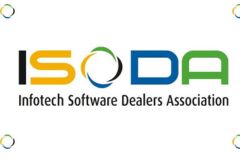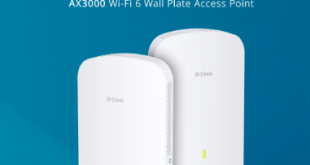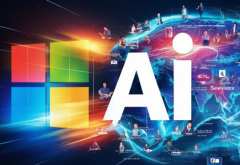Sameer Mahapatra, Country Manager and VP Sales in India & SAARC, Aeris Communications elaborates on the future of IoT and EV both from the company and industry perspectives.
What are the products and services in the Aeris India portfolio?
We are an integrated IoT player with a diverse portfolio working across sectors like agriculture, manufacturing, healthcare and automotive. For us automotive has been a special focus area where we cater to deliver our services to OEMs and enterprises to realise a connected vehicle program using our state of art Aeris IoT platform, connected solutions and services.Other spheres including vehicle, component manufacturers, financers, ride sharing, delivery companies and more are benefiting from our constant innovation and R&D efforts.
In addition, we also have modules of use cases tailored on Aeris IoT Platform for each industry where the customer has to just choose from a bouquet of use cases availableplug in and roll out. Aeris in India is responsible for the company’s business operations across India, SAARC, SEA and Africa regions.
Can you elaborate on your solutions for vehicle tracking & employee tracking? How are they helpful during coronavirus pandemic?
It is great to see how vehicle tracking by Aeris has entered a high degree of sophistication with The Aeris IoT Platform creating data sets much beyond the vanilla track and trace solutions. Customers are able to draw deeper analytics like predictive maintenance, driving behaviour, fault prediction, immobilisation, theft reduction, geo fencing and, much more.
People tracking using IoT solutions is a growing market with demand for monitoring personnel deployed at remote locations as well as on the field for productivity, health practices, baby monitoring, employee safety, are all driving growth in this space. With the unprecedented times due to this pandemic, we are already seeing plethora of new use cases emerging for IoT applications, such as remote temperature monitoring, social distancing alert applications people tracing enquiries have gone through the roof.
What is the GTM model followed by Aeris India and how has it got impacted due to COVID19 pandemic?
Aeris GTM model includes direct sales, channel/partner led sales and online presence on digital platforms too. While we can say that the former two have got impacted due to the lockdown, but, our virtual connect with existing and prospective customers has gone to an all-time high. Virtual connect with customers, remote deployment capabilities using online tools and self-service tools for the customers have been immensely helpful in making us a very efficient and connected enterprise altogether. Digital platforms have facilitated faster communication with prospects and customers, especially on the newly launched connected technology offerings in our portfolio.
What sort of traction are you witnessing in India? Who are the marquee customers and what are their use cases?
For us, fleet/ride sharing, and leasing are the fastest growing vertical in India. With delivery and last mile becoming a common place; the need for connected mobility is urgent and we are playing a lead role in this. Our footprint is national, and we have seen an equal penetration across states. Apart from North Eastern states we have had business implementations across all other regions. Adding to this, the two-wheeler segment in the Post COVID scenario will become one of the fastest growing segments and we see ourselves participating in this increased demand by enabling connected vehicles.
Where do you see the future of the IoT industry going? What is the effect of this pandemic on this industry?
IoT and the relevance of it in the current world is beating all earlier estimates. Global health, climate control and green emissions will be prioritised like never before in the post-COVID world and IoT will play a pivotal role in this transformation. Future for the modern enterprise will be fashioned by remotely connected employees, automated systems, intelligent data inputs being generated by AI engines and machine learning. With a world where everything will be connected to everything and data is the new oil wheeling the engines of Industry 4.0, where IoT will lead the way into the future. Pandemic will accelerate the growth and adoption of IoT as remote working, innovative healthcare solutions, predictive analytics, data driven insights and forecasts will become critical for economic survival and growth.
How are technologies like 5G and AI playing an important role in defining IoT in a better manner?
The amalgamation of IoT, AI and 5G technologies have just started to change the world and has powered billions of additional devices to connect to the web. These technologies are taking over all industry verticals like education, healthcare, automobile, smart cities, BFSI, etc. The powerful combination of core artificial intelligence and IoT and connectivity loop completed by 5G will definitely power the acceleration of IoT into a broader spectrum. With 5G, the world will see a further surge in connected devices, generating 100x higher mobile data volumes, coupled with 5x lower latency than now and newer applications, especially in connected healthcare and remote management solutions.
Many IoT deployments fail because there is no proper marriage between IT and OT. While we are quite advanced on the IT side, we are often found lacking on the OT side. What is your take on this?
There has been great deal of work which has happened now on IT/OT integration. Successful implementation of Industrial IoT projects is heavily dependent on a robust convergence of IT and OT systems of the companies. AI and IoT concepts are now seen working closely with Industrial OT systems like conveyor belts, oil refinery cracking towers, alerts on power grids etc leading to a more efficient output and input management rigour.
What are the security challenges involved in employee and vehicle tracking?
Enterprises and individuals alike have been apprehensive on telematics due to security reasons. Top 3 concerns facing the industry today are a) Security of data on the cloud b) Data privacy issues and C) Misuse of data points. Companies like Aeris have gone ahead of these issues by implementing defence grade security solutions ensuring cloud security and device encryption protocols ensuring complete customer data protection. Therefore, while we say the challenges are real, there are also active solutions present in the ecosystem to manage these.
What would be India’s standpoint in terms of EV by 2025?
This is a moving target, especially with the pandemic now. There are multiple reports and data points basis last years’ projections Pre-Covid times on adoption of EV by 2025 in India and worldwide, which will altogether change now. However, global health, climate control and green emissions will be prioritised like never beforein the Post-Covid era. And IoT will definitely play a pivotal role in this transformation.
Electric vehicles will see a boost in all formats starting with two and three wheels. It can be predicted that by 2025, 2/3 wheels will be concentrated majorly on EV’s adoption, but 4 wheelers and above will have a slower adoption due to multiple factors, including charging infrastructure.
What were the changes witnessed in society at large after the partnership between Aeris and E-blu?
We believe that the E-Blu model is a unique business format enabling the lowest strata of the society to start a livelihood. The model runs on the backbone of technology and its growth and sustenance is heavily riding on our solution accurately supporting the business model. As a result, bothbefore and during the pandemic, we have seen Aeris connected technology solutions helping hundreds of E-rickshaw owners respectfully earn and make a secure living using our IoT solutions &services. This makes us proud on being associated with E-Blu on their essential servies provider and covid warrior role.
 Latest Technology News Today – Get Latest Information Technology Updates and Services Latest Technology News Today – Get Latest Information Technology Updates and Services
Latest Technology News Today – Get Latest Information Technology Updates and Services Latest Technology News Today – Get Latest Information Technology Updates and Services 









